Creatures in the news — winged, four-footed, cute or scary
Surely these are the cutest critters I have seen all year  Check out their teeny feet:
Check out their teeny feet:
https://www.abc.net.au/news/2020-01-02/swarms-of-mouse-sized-microbats-in-your-backyard/11818138
My only concern is that their habitat survives summer and the drought. These mammals are notoriously susceptible to rising temperatures.
Seeing birds through binoculars, changes everything...
https://www.nytimes.com/2020/01/06/science/lebanon-birds-hunting-conservation.html
Sadly, wouldn’t let me in, even though I don’t remember reading a NYT article this year.
Joanne, stay safe!
“But the bottlenecks also serve hunters. At certain points throughout the country, the narrow flyways funnel birds through elevated vantage points from which hunters can get easy shots.
In 2017, Axel Hirschfeld, campaign and operations manager with the Committee Against Bird Slaughter, traveled to Lebanon to conduct a survey of the problem. “What we saw in 2017 was the worst I’d seen in 18 years of work for C.A.B.S.,” he said. Hundreds of dead birds were left uncollected on the ground, and the soft breast feathers of eagles could be seen falling like snow as the birds were shot from the sky.
In addition to working closely with C.A.B.S., Mr. Serhal’s organization has lobbied Lebanon’s government for stricter anti-poaching laws, developed a bird book and field guide, and visited scout groups and schools. It also has reintroduced a traditional Islamic system of conservation to Lebanon.
Two decades ago, Mr. Serhal was looking at century-old military maps of Lebanon when he noticed something oddly familiar: areas labeled “hima,” and town names that included the word. In Arabic, hima can mean refuge, protected area, private pasture or homeland; “Humat al-Hima” (Defenders of the Homeland) is Tunisia’s national anthem. Mr. Serhal had known vaguely of the idea, but had no idea that hima had existed in Lebanon.
He discovered that the concept dates back more than 1,000 years, with a mention in the Quran. Muhammad had designated certain areas as hima, which meant they were subject to rules about grazing, hunting or even trade. On Mr. Serhal’s maps, it turned out, hima signified communal areas. The word’s appearance gave him an idea: Perhaps he could revive its traditional meaning.
“That gave me the shock of my life,” he said. His binoculars revealed a different way of viewing nature: “When you go to the field as a hunter with a gun, you don’t see the bird. The minute you flush it, you shoot.”
Watching the bobwhite mother protect her chicks, he thought: “I am a criminal.”
In 1990, Mr. Serhal completed a stint at the Brooklyn Zoo and, with Lebanon’s 15-year civil war ended, returned home. In 1996, he helped establish the Shouf Biosphere Reserve, Lebanon’s first national park.
But after a few years, he felt the Shouf wasn’t working as well as it should. The American model, of land designated and protected by the government, had angered people in the surrounding villages, who had been free to use the area for as long as anyone could remember, to graze livestock and pick wild herbs.
Mr. Serhal thought that, instead, hima might be accepted as a traditional concept; it also would include communities and municipalities in the design of the conservation areas. Hima wouldn’t be just about protecting nature, Mr. Serhal said; it would be “nature plus people.” When S.P.N.L. helped a community design a local hima, the group suggested additional conservation methods, like banning hunting.
The first hima was established in southern Lebanon in 2004. Today there are 25; they have been given legal status by the government and cover more land than Lebanon’s national parks. Five of the designated hima are also what BirdLife calls “Important Bird Areas,” of which there are 15 in the country. Last year, Mr. Serhal was awarded Japan’s Midori Prize for Biodiversity, among the world’s most prestigious awards for conservation work.
Thank you for this article.
and yes, at this stage our part of the Gold Coast is no danger.
Meanwhile, right here in New Jersey, deliberate plan to kill birds...
https://www.nytimes.com/2020/01/09/nyregion/liberty-state-park-golf-course.html
For Joanne — and animal lovers
opics Wildlife Meet Bear, the koala detection dog
Meet Bear, the koala detection dog
Working dogs like Bear find it hard to adapt to a normal, domestic life. Luckily, he found a second life as a koala detection dog. By Angela Heathcote • November 21, 2019 • Reading Time: 3 Minutes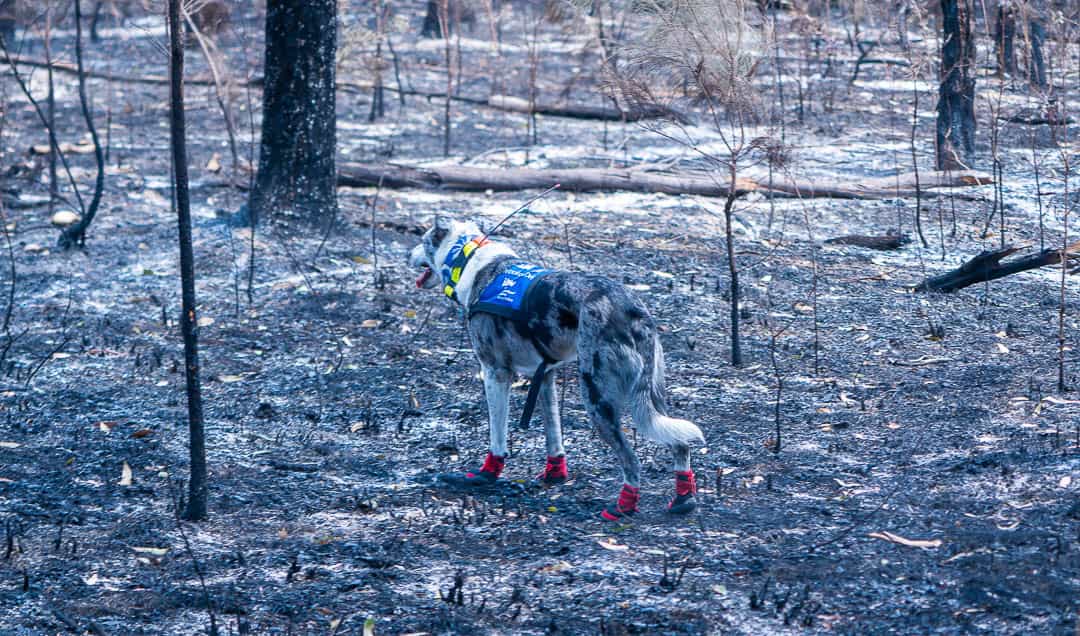
Australian working dogs – blue and red heelers, kelpies and border collies – are known for their high energy, strong work ethic and good nature, but what happens when they don’t quite fit into farm life and also aren’t cut out for domestic life?
Meet Bear, the koala detection dog that’s been deployed to sniff out the iconic marsupial in fire ravaged areas across the east coast of Australia, an important part of the Detection Dogs for Conservation program at the University of the Sunshine Coast.
Romane Cristescu, Bear’s trainer, says that before Bear’s rescue in 2016 he was acting out. “He was a very high-energy young adult and apparently ate the whole flat he was living in,” – a behaviour that Romane puts down to boredom.
The Detection Dogs for Conservation program was after high-energy dogs that can happily spend hours in the bush with researchers. An obsession with playing and a soft nature with other animals are also critical to a detection dog’s success. Bear was the perfect fit.
“Bear is a happy soul, always keen to be on the move and do something,” says Romane. “His worst nightmare is to be left behind when you go to work – luckily for him, we are allowed to bring our dogs to work everyday.”
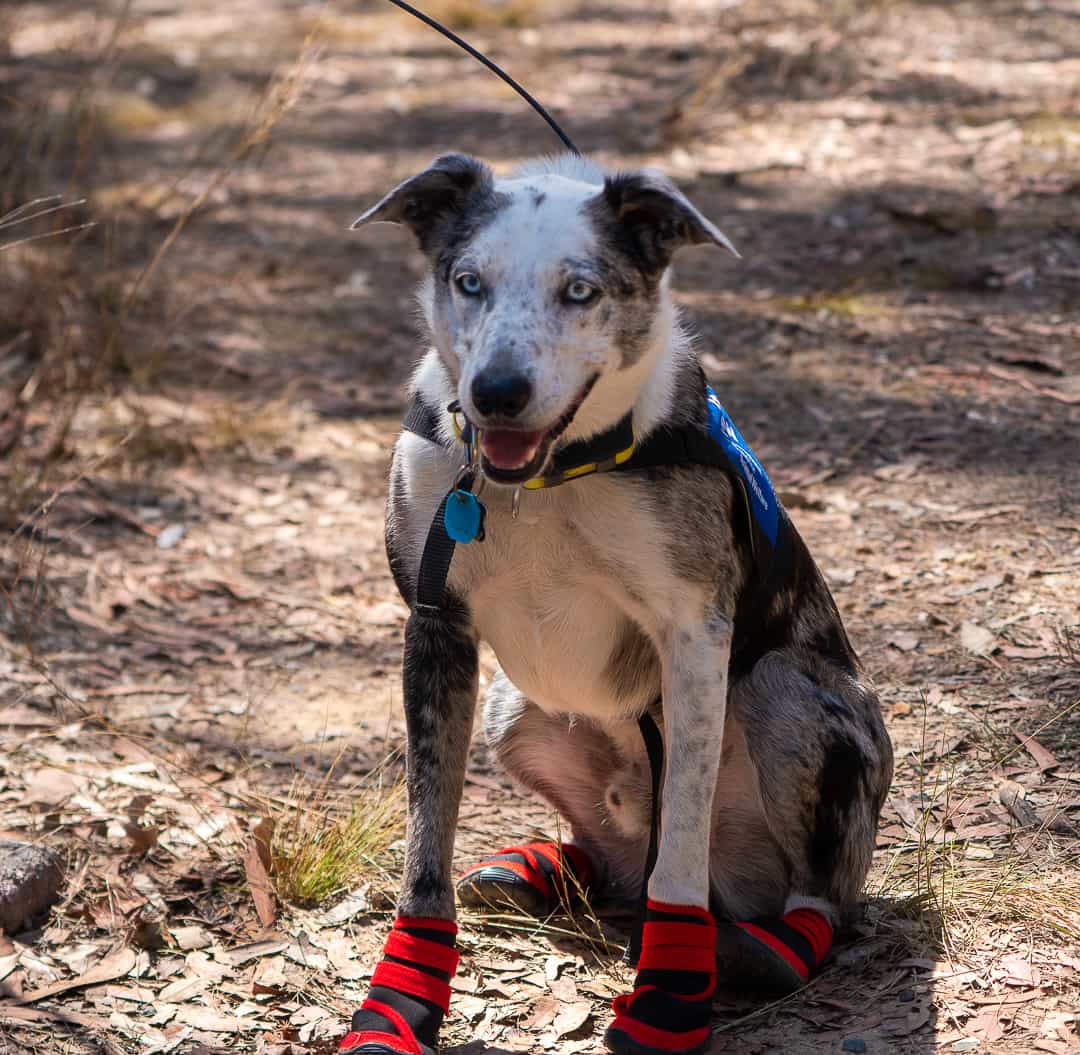
All up, the program has five dogs, with two of those dogs dedicated to sniffing out koala scats, known officially as koala habitat detection dogs. Bear isn’t usually deployed in dangerous settings like the bushfires we’ve seen recently. Rather, his sniffing skills are used for research purposes.
The idea for a koala detection dog came about when Romane was searching for koala scats for her PhD, spending countless hours on all fours, scrambling through the leaf litter in search of the precious poop.
“That gave me a lot of time to think of a better way – one that possibly was four-legged,” Romane says. “Little did I know at the time that others had been working with dogs to help conservation in the past, but as far as I know, never before for koala scats.”
In 2015, Romane and her colleagues published a paper in Nature, detailing how the koala habitat detection dogs had a 100 per cent success rate in finding the scats, while humans were found to miss around 30 per cent of sites, which impacted robust data on koala distribution.
“With the help of our four-legged team, we are tackling some big research questions such as the impact of fragmentation on genetics of the koalas and how to maximise habitat rehabilitation benefits,” says Romane.
“We also work closely with government and industry partners to feed robust data into their management strategies, but also, on-the-ground actions such as protecting wildlife during habitat clearing. We also partner with non-for-profit to help with animal welfare, such as finding sick or injured animals.”
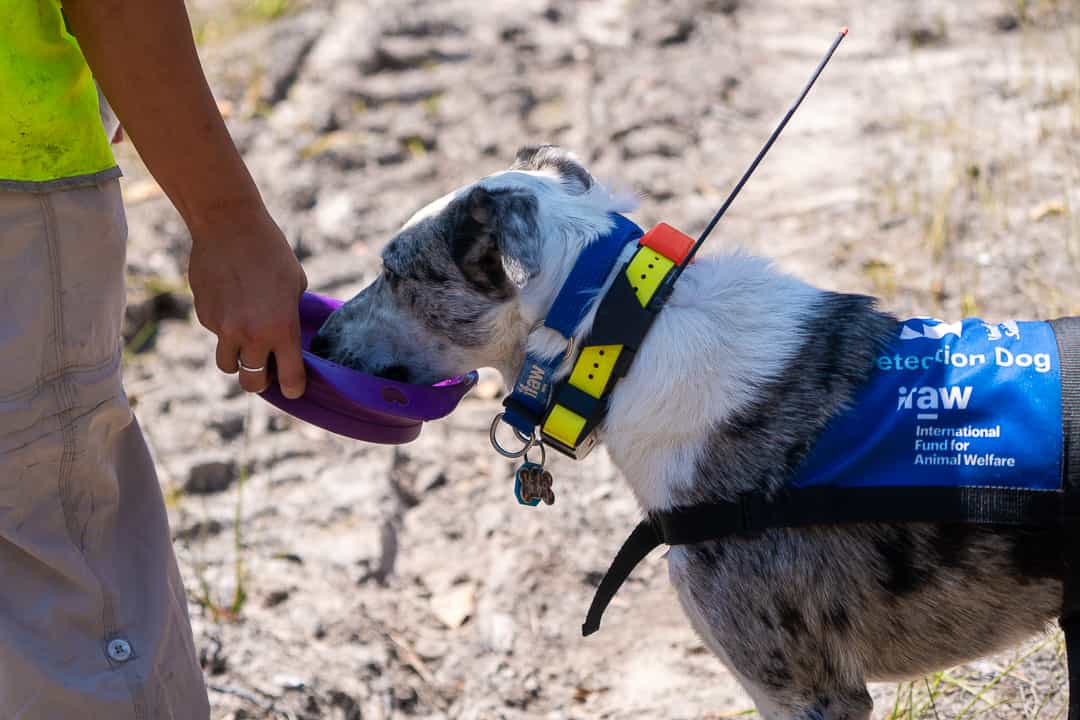
Bear’s sponsors, the International Fund for Animal Welfare, believed his talents in locating sick and injured koalas for wildlife carers in the past could be put to good use following the devastating bushfires.
According to the Port Macquarie Koala Hospital, around 350 koalas have died in the fires. The fact that koala populations in NSW and QLD were already under pressure prior to the fire, from land clearing, attacks from domestic animals and climate change, has scientists worried about populations going forward.
“Bear has only been deployed in a few areas yet, as there are still many places unsafe for us to go,” says Romane. “In those areas he hasn’t found survivors, which could mean the fires were so hot there isn’t any trace left of koalas, or, hopefully, that koalas either moved ahead of the fire front and into safer areas, or have been rescued already.”
Beyond his important work during these devastating bushfires, Bear has a long career ahead of him assisting scientists like Romane with conserving Australia’s koalas. “Even professional koala spotters can miss up to 80 per cent of koalas during searches. This isn’t good news for a vulnerable species…this is the reason we are constantly trialing new methodologies – Bear is a very attractive and entertaining
I have to say, Diego is quite the looker!
https://www.nytimes.com/2020/01/12/world/americas/diego-tortoise-sex-drive.html
Even in a pandemic....
https://www.nytimes.com/2020/05/18/world/canada/toronto-coronavirus-foxes.html
Personally, this is a nice change from funny cat and dog videos on Facebook.
@mtierney, I love foxes and I often have a visitor in my yard. Seeing a few lately but this is one of my favorite guys from the winter.
mtierney said:
Amazing photo — looks as though the fox sat for a portrait!
I'm planning a painting of him. He is a handsome fox.
Tah dah!
A few weeks ago, a nature photographer who lives near Yellowstone national park sent a four-word text message to Dr Jane Goodall, the British primatologist.
“Miraculously, she still lives!”
The photographer, Thomas Mangelsen, was referring to a grizzly bear known as “399”, probably the most famous wild bruin in the world. At 24, not only is she one of the oldest grizzlies living outside a zoo, she has also continued having cubs to a venerable age, becoming a poster child for the recovery of bears in the greater Yellowstone ecosystem.
And no grizzly has done more, through her own behavior, to change a perception that members of her species are temperamental menaces ready to attack people at the slightest provocation.
In mid-May, the 350lb grand dame emerged in Grand Teton national park, striding alongside Pilgrim Creek. Trailing close behind the matriarch were four cubs, born this winter in a wilderness den high in the snowy backcountry.
Mangelsen has been chronicling the life and times of 399 for nearly 15 years. Goodall counts herself among the bear’s most ardent admirers, and, holed up in England, was eagerly awaiting word on whether 399 had survived the long winter. Mangelsen said she was ecstatic.
The population of grizzlies in the Yellowstone region was given protection under the Endangered Species Act in 1975 after their numbers dipped to less than 150, and scientists feared they could disappear altogether. But their recovery, thanks to habitat protection, crackdowns on poaching and a ban on hunting, is considered one of the greatest conservation triumphs in US history. Today, at least 700 grizzlies inhabit the region and, luring tourists, they have paid tangible economic dividends.
Born in 1996, 399 has demonstrated the importance of a healthy female bear to an overall population. At least 22 bears are descended from her, both cubs and cubs of cubs (in human terms, grandchildren). It’s possible she could become a great grandmother – a senior citizen who is still having offspring of her own.
Generally pacific in nature, 399 has raised her broods by roadsides in view of groups of curious humans, including some who have exercised poor judgment by moving closer to take photographs of her and her cubs. She has, with one exception, demonstrated incredible restraint.
We all have read about the potential environmental calamity from the loss of bees. Here is a possible answer!
https://www.nytimes.com/2020/06/17/science/bubbles-pollinating-bees.html
I’ve only just read this dramatic account of ferret/bathroom encounter.
https://thenewdaily.com.au/news/good-news/2020/06/25/ferret-kiss-of-life/
Yes, there’s a wonderfully happy ending, quite unexpectedly! Lovely video clip, too.
This is so touching! A tidy bear.
https://www.facebook.com/thepetcollective/videos/506134566697158/
Thought you’d enjoy this video on tree kangaroos
And this wonderful recovery of the bilby population following reintroduction to a national park
I honestly had no idea they could live this long! What incredibly tough birds they really are, considering the harsh conditions they’ve evolved in.
@mtierney, you might enjoy this article as much as I did 
https://www.abc.net.au/news/2020-09-02/rare-five-legged-six-footed-lamb-born-in-wa/12621770
No genetic engineering, just a trick of nature: healthy lamb with an extra leg, and the extra leg has an extra foot... 2020 is indeed a weird year.
Reading animal stories was my favorite pastime— even before COVID. Now, these “tales” are therapeutic!
It has been a long, long time since I revisited this feel-better thread. September? Before the election and before three vaccines were approved? 2020 keeps on giving us surprises.
.
https://www.nytimes.com/2020/11/18/nyregion/christmas-tree-rockefeller.html
Animals and humans share a taste for salt....
https://www.nytimes.com/2020/11/23/world/canada/canada-moose-sign-cars.html
Never thought about it, but WOW!
http://nautil.us/issue/94/evolving/why-birds-can-fly-over-mount-everest-rp
My mother always had a canary — a dog and cat as well — so I got a canary, named him Willie, after Willie Nelson, of course. His song filled our big house — over the din created by four kids and assorted four legged critters. Willie survived the chaos for years — his cage safely suspended from the kitchen ceiling. No stand to fall over, or knocked down by a cat (happened only once, bird was unharmed, but cat was sulky for days “bad kitty!”
https://www.nytimes.com/2021/01/14/world/americas/suriname-birds.html
Lovely story on redemption— or finding purpose....
The puppies, above post, are believed to have been part of the US Customs breeding program.
The program is a spin off from an Australian government sponsored breeding program. They have been breeding dogs for military & police use for over 30 years (with superior results).
Featured Events
Employment Wanted
Latest Jobs
Employment Wanted
-
Apr 19, 2024 at 9:42am
-
Amazing Housecleaning available call! (201) 889-5521
Apr 18, 2024 at 12:40pm
-
Apr 18, 2024 at 11:17am
-
Apr 17, 2024 at 6:35pm
-
Administrative Assistant/REMOTE-Part Time
Apr 17, 2024 at 1:19pm
Help Wanted
-
NPF509 FT Nanny/Family Assistant for Twins (ASAP Flex)
Apr 19, 2024 at 12:38pm
-
CF582 FT Nanny/Family Assistant for 2 (Late May Start)
Apr 19, 2024 at 12:18pm
-
SF5001 FT Nanny for 2 (ASAP Start)
Apr 19, 2024 at 12:02pm
-
Full-Time / Part Time Nanny Needed
Apr 19, 2024 at 11:51am
-
MF519 PT Nanny for 1 (ASAP Start)
Apr 18, 2024 at 5:23pm








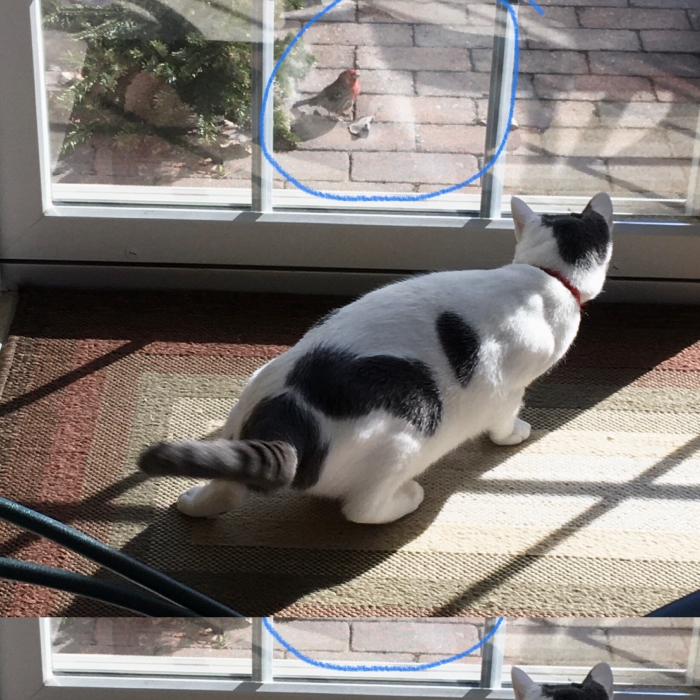
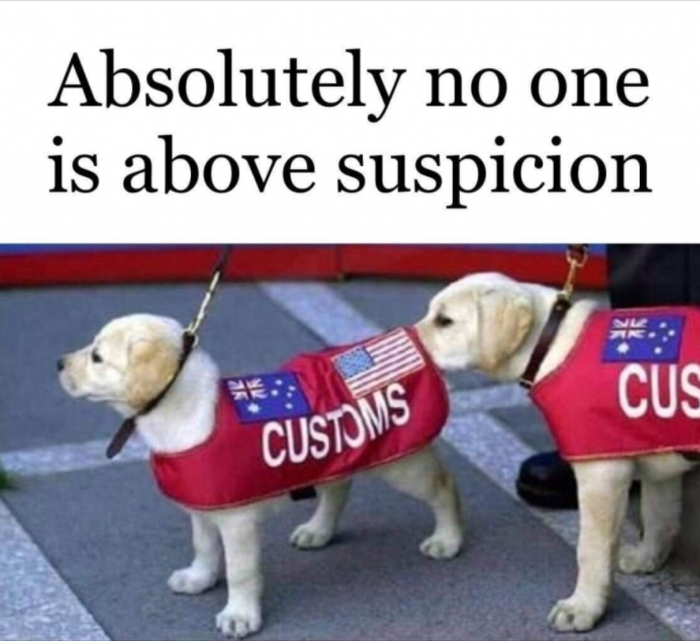










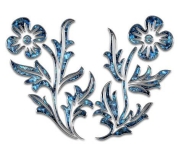






Sometimes, what may appear to be the solution, only becomes a new problem.
https://www.nytimes.com/interactive/2019/12/25/world/europe/farms-environment.html